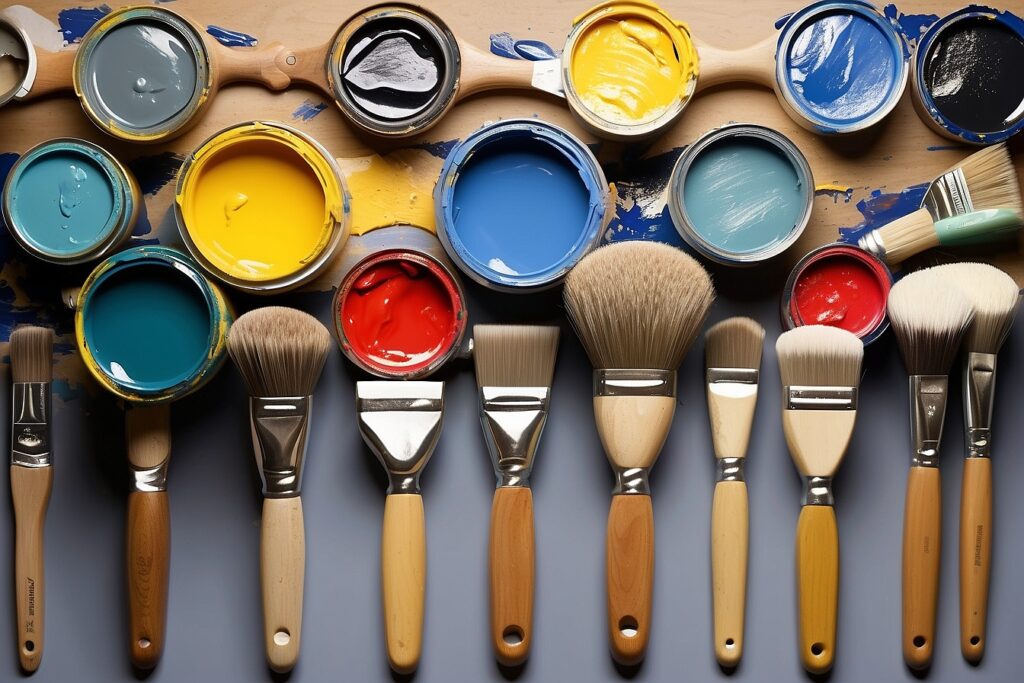Introduction: Transforming Furniture with a Brushstroke of Brilliance
Furniture painting is a captivating venture that goes beyond the realms of a mere household task. It’s a creative expression, an opportunity to breathe new life into your living spaces. As we continue on this path of changing furniture into practical art, it is critical to realize the inherent benefits. Not only does painting furniture enhance its aesthetic appeal, but it also allows for personalization, recycling, and a profound sense of accomplishment. However, to truly master this art form, one must understand the nuances of professional techniques. This comprehensive guide is your key to unraveling the secrets of furniture painting, helping you achieve results that mirror the work of a seasoned pro.
Preparing the Furniture: The Foundation of a Masterpiece
Thorough preparation is necessary before the first coat of paint is applied to your furniture. This initial phase sets the foundation for a successful project and ensures a professional-looking finish. Let’s delve into the critical steps that precede the artistry:
- Thorough Cleaning: The canvas for your furniture painting endeavor must be pristine. Begin by thoroughly cleaning the surfaces, and removing accumulated dirt, grease, and any remnants of old paint. This step not only guarantees a fresh start but also promotes better paint adhesion.
- Sanding for Smoothness: The tactile quality of your painted furniture starts with the smoothness of its surface. Sanding is the key to achieving this. By addressing rough surfaces, you not only enhance the visual appeal but also create an ideal texture for the paint to adhere to.
- Primer as the Base: Picture primer as the underpinning of your artwork—a uniform base that ensures the paint adheres evenly and prevents unsightly bleed-through. Applying a high-quality primer is a non-negotiable step toward achieving a polished, professional outcome.
Choosing the Right Paint and Tools: Precision in Every Stroke
With your canvas prepared, the next crucial decision lies in the selection of the right paint and tools. Every decision you make will have a big impact on how your project turns out. Let’s explore the nuances of this decision-making process:

- Types of Paint: The world of paints is diverse, offering options like latex, acrylic, and oil-based. Selecting the appropriate paint for your project requires an understanding of its properties and uses. Weigh the pros and cons, considering factors such as durability, finish, and ease of application.
- Quality Brushes and Rollers: A paintbrush is your artist’s brush, and the roller, is your trusted ally. Opt for high-quality brushes and rollers to ensure a smooth and consistent application of paint. The right tools make a substantial difference in achieving a professional-looking finish.
- Specialized Tools for Precision: Beyond the basics, consider employing specialized tools such as paint strippers and sanders for specific tasks. These tools elevate your precision, helping you navigate intricate details and challenging surfaces with finesse.
In the art of furniture painting, the right choices in this phase set the stage for a masterpiece. The palette has been chosen, the brush is ready, and soon your furniture will be transformed into a work of art.
Applying the Paint with Precision: Brushing on the Brilliance
Once your furniture is thoroughly readied with careful attention, it’s now the moment to hone your skills in achieving precise painting. This stage calls for a systematic and purposeful strategy, ensuring a polished and professional outcome. Let’s explore the detailed steps involved:
- Step-by-Step Application: Applying paint isn’t just about splashing color onto a surface. It’s a step-by-step process that demands attention to detail. Begin with even strokes, ensuring consistent coverage. This not only enhances the visual appeal but also sets the stage for a polished finish.
- Avoiding Drips and Runs: The bane of many a DIY painter is the presence of drips and runs. Learn the techniques to avoid these common pitfalls, employing strategies such as not overloading your brush, using the right amount of paint, and maintaining a steady hand throughout the application.
- Importance of Drying Time: Patience is paramount in achieving a professional look. Each coat of paint must be allowed to dry completely before applying the next. Rushing this process can lead to uneven surfaces and compromise the overall quality of the finish.
Achieving a Professional Look with Finishing Touches: Crafting Elegance
As your painted furniture takes shape, the focus shifts to the finishing touches that elevate it to a professional level. These nuances add depth and refinement to your masterpiece:

- Light Sanding Between Coats: A subtle but essential step in achieving a smooth finish is the use of sandpaper between coats. This gentle sanding smoothens any imperfections, ensuring that each layer contributes to a flawless final result.
- Glazing Techniques: Introducing glazing techniques can add a touch of sophistication to your painted furniture. This method involves applying a translucent layer, creating depth and dimension. Experimenting with glazing opens up a world of artistic possibilities.
- Sealant or Topcoat: To safeguard your hard work and enhance the durability of the paint job, consider applying a sealant or topcoat. This protective layer not only preserves the finish but also adds a professional sheen, making your furniture resilient against daily wear and tear.
Additional Tips and Tricks: Unleashing Creativity

As you master the fundamental techniques, let’s explore some additional tips and tricks that can take your furniture painting to the next level:
- Clever Hacks for Awkward Areas: Furniture often comes with intricate details or hard-to-reach spots. Learn clever hacks to navigate these challenges, ensuring every nook and cranny receives the attention it deserves.
- Creative Distressing and Antiquing: For those seeking a unique look, explore creative ways to distress or antique your painted furniture. These techniques impart character and charm, making each piece tell a story of its own.
- Experimentation with Colors and Techniques: Don’t be afraid to experiment with different colors, finishes, and techniques. Seize this chance to breathe life into your furniture with a touch of your unique personality. Embark on a journey of exploration, uncovering the elements that truly harmonize with your distinctive style
Conclusion: Your Furniture, Your Masterpiece
In conclusion, the journey of furniture painting is not just a task; it’s an art. As we reflect on the key takeaways from each section, remember that your furniture is a canvas waiting for your creative touch. The transformation from a mundane piece to a work of art requires attention to detail, patience, and a willingness to experiment. With the right techniques and a touch of creativity, you have the power to turn every piece of furniture into a unique masterpiece. So, armed with newfound knowledge, embrace the joy of furniture painting and let your creativity flourish. Your home will thank you for it.







